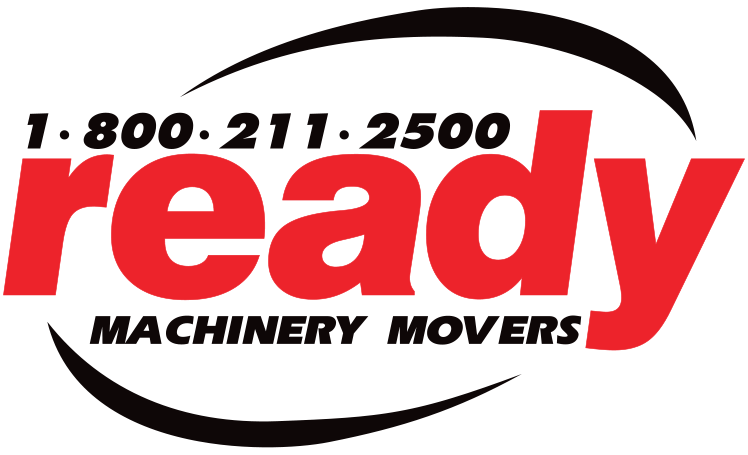Improving the efficiency of your manufacturing workflow serves to boost your company’s gross profits margins and competitive edge. To accomplish this, your plant needs to adopt tactics that minimize wastage and reduce the costs of your manufacturing processes. This, in turn, allows you to leverage that reduction, encouraging sales and increasing revenue generation.
The following factors directly impact manufacturing efficiency and productivity, and need to be analyzed for maximizing production:
- Employees
- Machinery and equipment
- Production procedures
Of these three, production procedures are most often overlooked as opportunities to maximize outputs. To get you started on enhancing the productivity levels of your manufacturing floor, below are a few straightforward strategies you can implement.

Evaluate existing workflow
Enhancing productivity does not necessarily require a complete overhaul. Making a thorough assessment of your existing workflow allows you to identify the strengths and weaknesses of the system. This way, you can keep whatever methods work (i.e. don’t fix what isn’t broken), make improvements on others, remove redundancies, and supply for any deficiencies.
This is the crucial first step and should cover all the bases, which are the people, equipment, and procedures. Use a value stream map to help you visualize and keep track of possible areas for improvement and how these changes can affect the flow of the entire system.

Organize
Optimizing the workspace and workflow is as simple as keeping things well-organized. Systematic arrangements of all aspects of the workplace, including physical and organizational, can increase the speed of work processes and improve functionality. Below are a few ways to make the most out of your floor space and assets:
- Remove redundant equipment from the floor
- Minimize the distance between pertinent assets to reduce movement and transport products more quickly without sacrificing safety
- Standardize procedures, like preventive maintenance, and delegate tasks to improve accountability
- Use software to automate functions including scheduling, inventory control, production analysis, and logistics
- Systematize inventory to:
- maintain sufficient quantities of materials, avoiding shortages and cutting wastage
- keep track of reliable vendors to ensure prompt delivery of quality supplies
- anticipate shortages to mitigate potential issues
Update technologies and procedures
Keep up-to-date with technological developments that can be used to improve your work processes. Newer technologies can improve efficiency and be targeted to expedite specific tasks. Remember: an employee is only as productive as their tools allow.
Automate where possible to minimize human error and boost efficiency. Purchase or update software to manage data-driven tasks (e.g. inventory and employee schedules).
Consider the cost of upkeep and whether or not the technology you’re selecting outweighs the benefits it offers. Investing in new technology may be costly, but any new addition or replacement should be worth their while if it provides a solution to a problem and has a positive long-term impact.
When you’ve acquired the software our machinery, implement procedures that complement the new system to streamline workflow (if necessary). Schedule regular evaluations to ascertain if performance levels are up to par or if further alterations are required.

Keep up with regular equipment maintenance
Equipment and machinery are at the core of the manufacturing process and should be treated with tender loving care. Regular equipment maintenance ensures that every machine and tool is in good working condition. Doing so allows the company to:
- Maintain the safety of the workplace, preventing workplace injuries and fatalities
- Avoid production downtime due to equipment failure
- Preserve the shelf life of equipment,
- Save on the cost of replacements and emergency or large-scale repairs
- Adhere to production schedules and sustain a timely turnaround
- A company can take the following measures to achieve this purpose:
- Schedule regular preventive maintenance
- Conduct regular inspections to identify possible problems
- Allow input from operators who, because they work closely with equipment, can alert supervisors to potential issues
- Provide operators with training for maintenance and troubleshooting

Make employee education a priority
Just as tools, like knives and axes, need sharpening to maintain their efficiency, so do the skills of your employees. To achieve the optimal levels of productivity, employees must have the right skill set, clearly laid out objectives, and realistic goals.
Training and education is an ongoing necessity if you want to keep them at the top of their game. It also grants that added boon of minimizing the risk of loss of high turnover rates, lawsuits, and production downtime.
In the manufacturing industry, education should go beyond the mandatory orientations for new employees and training for safety. Consider investing in the following:
- New Technology – When new equipment or software is acquired, the designated handlers or operators should undergo proficiency training to maximize use. The occasional refresher course may be necessary for long-term employees.
- Personal Improvement – To reduce employee turnover, offer the opportunity for career advancement by giving personal development education or training for new skill sets. The errors and downtime resulting from continually hiring new employees can cost the company more than retaining skilled and experienced workers.
- Workplace Harassment – In the wake of the #MeToo movement, educating employees on all types of workplace harassment — not just sexual — has become critical. Encouraging awareness of workers from all levels of the organizational structure can keep the company from having to fend off lawsuits.
Set realistic expectations
There is merit in observing moderation in all things — not least of all on the production floor. Goals must be achievable. Yes, deadlines must be met, but setting expectations too high can negatively impact various aspects in the workplace including:
- Contributing to worker dissatisfaction (which may lead to higher turnover)
- Sacrificing product quality (which can cause problems with clients and end consumers)
- Compromising workplace safety (which can invite personal injury claims and production downtime)
- Missing goals and deadlines
Satisfied workers are more alert, work faster with more precision, and are more productive overall. To keep employees satisfied and encourage work efficiency, make goals and objectives attainable and realistic. This way, the company maintains optimal levels of promptness, product quality, and workplace safety.

Inspire teamwork
Manufacturing workplaces should function like their well-oiled machines — each part performing its separate role but working towards the same goal. By encouraging teamwork and collaboration between workers, companies can:
- Encourage a flatter organizational structure
- Improve communication between departments to speed up processes
- Work out problems faster
- Generate new and innovative ideas by encouraging input and feedback from a wide range of sources
- Promote workplace synergy which boosts morale and motivation, fosters accountability, and provides an incentive to work at higher performance levels
Protect your bottom line with these tips to maximize the efficiency of your production floor. Conduct assessments regularly to make sure that the kinks and wrinkles of the workflow have been worked out.
While you’re optimizing your facility layout, you can take advantage of the extra space offered by Ready Machinery Movers. We receive and store heavy machinery and equipment so you can make the most out of your factory cleanup or overhaul. Call us at 1-800-211-2500.
